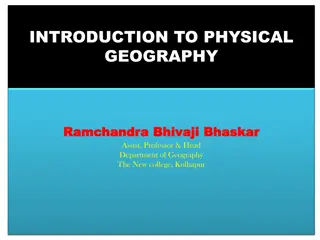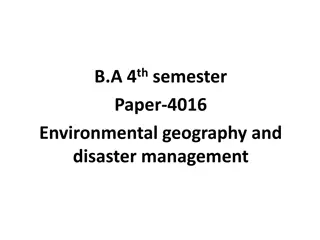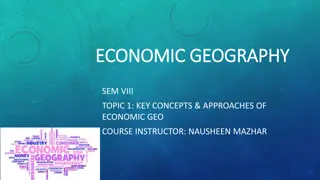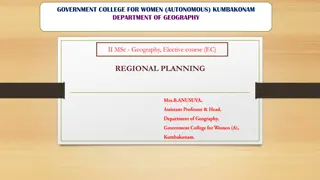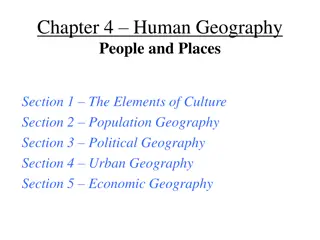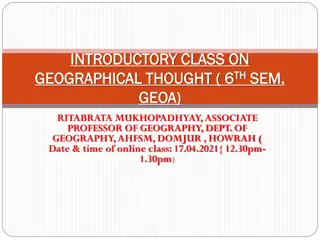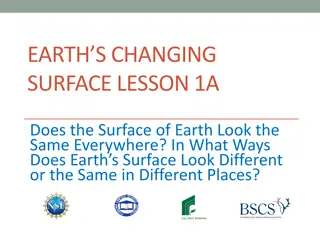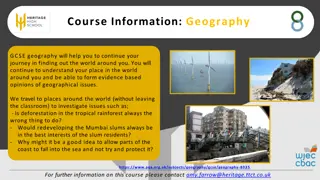Understanding Geography: Earth's Description and Study
Geography, coined by Greek scholar Eratosthenes, encompasses the description and explanation of Earth's surface differentiation. It involves physical and human aspects, with branches like geomorphology, climatology, and economic geography. Physical geography studies the lithosphere, atmosphere, hydrosphere, and biosphere, while soils, landforms, plateaus, and mountains play crucial roles in human activities.
Download Presentation

Please find below an Image/Link to download the presentation.
The content on the website is provided AS IS for your information and personal use only. It may not be sold, licensed, or shared on other websites without obtaining consent from the author. Download presentation by click this link. If you encounter any issues during the download, it is possible that the publisher has removed the file from their server.
E N D
Presentation Transcript
GEOGRAPHY Gaea + Graphein--- Greek word Geo + Graphy--- English word Which means-Earth+ Description Simply we can say description of the earth Or Literally to write about something Who coined the term Geography A Greek scholar, Mathematician and astronomer Erathosthenese first time used the word in 234 B.C.
Definition of geography According to Richard Hartshorne, Geography is concerned with the description and explanation of the areal differentiation of the earth surface. According to Hettner, Geography studies the differences of phenomena usually related in different parts of the earth surface
Geography and its branches Geomorphology Climatology PHYSICAL(Based on systematic approach) GEOGRAPHY Hydrology Population geography Pedology Biogeography- Ecology, Plant geography, Environmental geography and zoo geography Economic geography HUMAN( Based on systematic approach) Cultural geography Social geography Political geography
Nature and scope of physical geography Physical geography includes the study of (1) Lithosphere- that deals with landforms, drainage, relief and Physiography. (2) Atmosphere- Its composition, structure, elements and controls of weather and climate, temperature, pressure, winds, precipitation etc. (3)Hydrosphere- Oceans, sea, lakes and associated with water realm. (4) Biosphere- life forms including human being and macro organism and their sustaining mechanism. Eg. Food chain, ecological parameters and ecological balance
Soil Soils are formed through the process of pedogensis and depend upon the parent rock, climate, biological activity and time. Each elements are important for human beings. Like Landforms provides the base on which the human activities are located. Plains are utilized for agriculture.
Plateaus provide forests and minerals. Mountains provide pastures, forest, tourist spots and are sources of rivers providing water to lowlands





